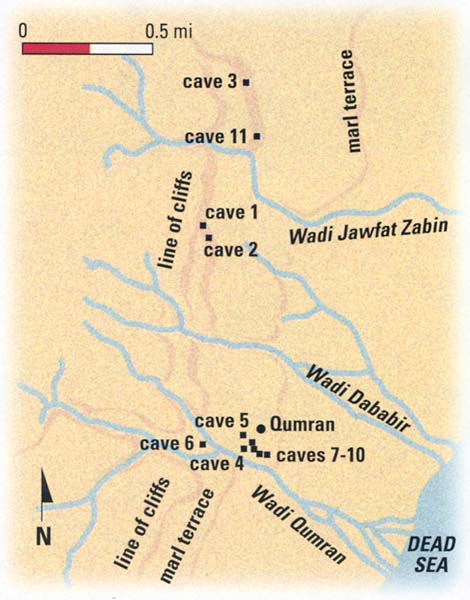Image Details

Qumran and the caves. Six of the eleven caves in which the Dead Sea Scrolls were found are within a quarter mile of the settlement at Qumran, several within a few hundred yards; some of them are at the end of the finger-like terraces that protrude behind and to the left of the ruins. Although the caves are so close, at least three recent scholarly interpretations of the ruins—that Qumran was a commercial entrepôt, a military fortress and a winter vacation villa—disconnect the scrolls from the site. The usual interpretation is that Qumran was home to an isolated religious community and that the scrolls reflect their ideology. In the accompanying article, author Edward Cook shows how understanding the purification needs of a Jerusalem sect, whose rituals are described in the Temple Scroll, provides the key to interpreting the site.
